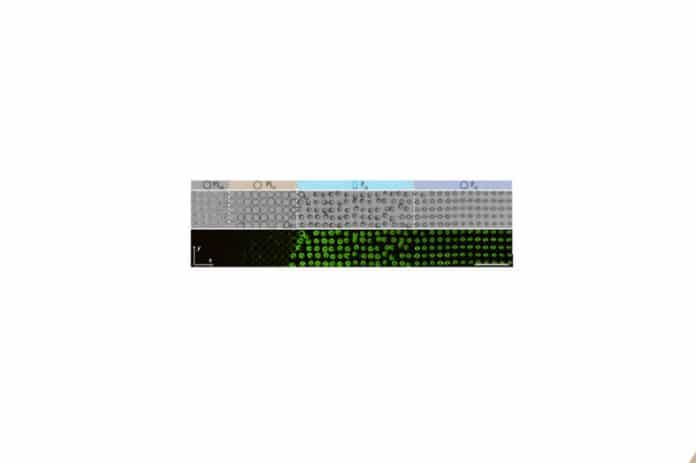Motivated by the process of cell separation observed in developmental biology, scientists at the University of Bristol have exhibited another approach to building communities of cell-like entities i.e., protocells using chemical gradients.
Using a chemical gradient, scientists successfully transformed a uniform population of small droplets into a diverse community of artificial cells. Scientists used ultrasonic waves to make regular rows of thousands of droplets containing the energy storage molecule ATP. They at that point permitted shape-shifting molecules (counterfeit morphogens) to diffuse in one direction through the populace.
As the morphogens came into contact with the droplets, the drops changed row by line into membrane-bounded protocells with various shapes, chemical compositions, and enzyme activities. How the droplets changed was dependent on the local morphogen concentration in the advancing chemical gradient.
Waves of differentiation supposedly traveled over the populace, leaving a pattern of differentiated protocells to such that a complex and ordered community emerged immediately from the homogeneous populace.
Professor Stephen Mann from Bristol’s School of Chemistry said, “This work opens up a new horizon in protocell research because it highlights the opportunities for spontaneously constructing protocell communities with graded structure and functionality. Although the research is just beginning, the results provide a step towards developing artificial cell platforms for chemical sensing and monitoring under non-equilibrium (flow-based) conditions.”
Dr. Liangfei Tian said, “As droplet-based protocells have been proposed as plausible progenitors to membrane-bounded protocells on the early Earth, our work could have implications for contemporary theories of the origin of life.”
“In particular, as chemical gradients produce protocell diversity from uniform populations, maybe a similar mechanism was responsible for the emergence of functional complexity in ancient proto-living systems.”
The study published today in the journal Nature Communications.
